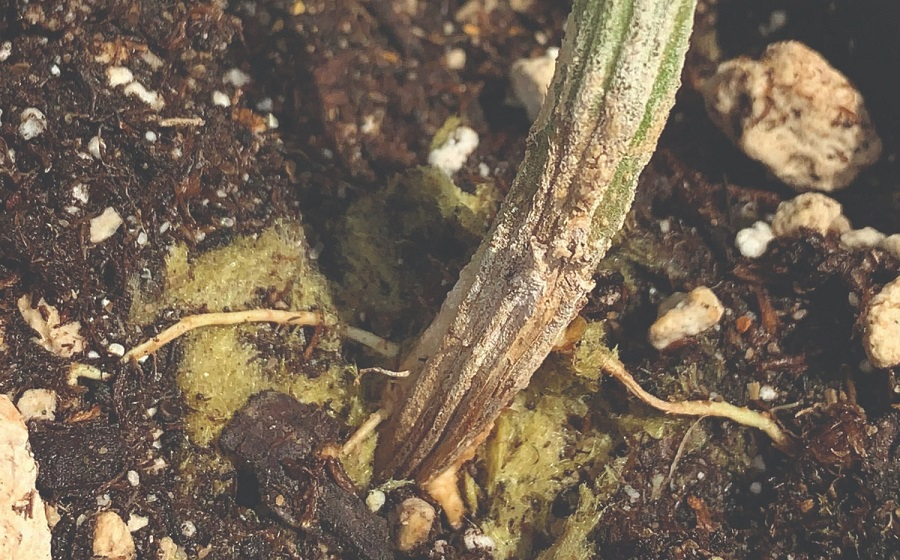
Let's be honest, root rot cannabis in soil is a difficult disease to treat, but this does not mean that we have to stand idly by. We are going to learn how to identify this disease, how to prevent it and in the worst case, how to cure it. We'll go through it all right away, but the first thing you need to know about cannabis root rot is that it can be caused by different types of fungi such as Pythum, Fusarium or Rhizoctonia.
We already know why this disease is caused. But what exactly does it consist of?
This problem appears most of the time because of poor soil drainage, which is the reason for the appearance of the fungi we have just talked about. But let's talk about specific actions that favor the appearance of cannabis root rot:
If you water your marijuana plants excessively, you are taking too many risks. And the same with the temperature. Fungi move like fish in water between 22 and 34 degrees, and if you grow with a hydroponic system... Be especially careful.
And now, let's get down to business.
Root ron on cannabis: Symptoms and how to fight them
There is no concrete and fixed list that refers to the exact symptoms, since they can show themselves in very different ways, but if you detect these symptoms in your plants, your problem is probably cannabis root rot:
- Burnt or brown leaf edges
- Dark spots
- Leaf edges curling upward
- In hydroponics, soft, brown roots that give off a strong odor
Root rot during flowering
Once you have to deal with the problem of root rot during flowering, the main advice we can give you at Delicious Seeds is that you have to be drastic with the plants in which you have detected that this disease is at an advanced stage. It is vital that the spores do not spread to other plants, so the best solution is to eliminate the problem immediately. But there is more you can do.
There are so-called biofungicides, which usually work very well against the various fungi that cause this cannabis root rot. Depending on the state of the plants, this product should be applied regularly at an interval of between two and five weeks. It all depends on how you see the state of your crop. Regarding its application, you can do it "drop by drop" or by spraying the substrate.
And if you need a quick answer... Here is a last resource/trick.
Hydrogen peroxide for root rot
If you mix a liter of water with 100 ml of hydrogen peroxide, you have a homemade antidote against root rot in soil weed. In case you do not have this product, you can substitute it with bleach (in the same proportion).
By using hydrogen peroxide for root rot in such a low quantity, it is normal that your plant will not be damaged. However, the idea is that, thanks to this mixture, the roots of your plants will be tidied up so that, later on, the usual growth process can be resumed.
You will probably notice that the usual milky white color characteristic of your roots returns when you apply this mixture to the roots. But we insist, root rot hydrogen peroxide is not the ideal method and we only recommend it when you strongly need to save your crop.
So, with all these complications in mind, it is best to put all our efforts into prevention:
- Hygiene is the key. And indoors, even more so. So keep your growing space clean.
- Use a root stimulator on a weekly basis.
- Choose a substrate whose quality offers you the maximum guarantees.
- Give optimal ventilation to your crop




